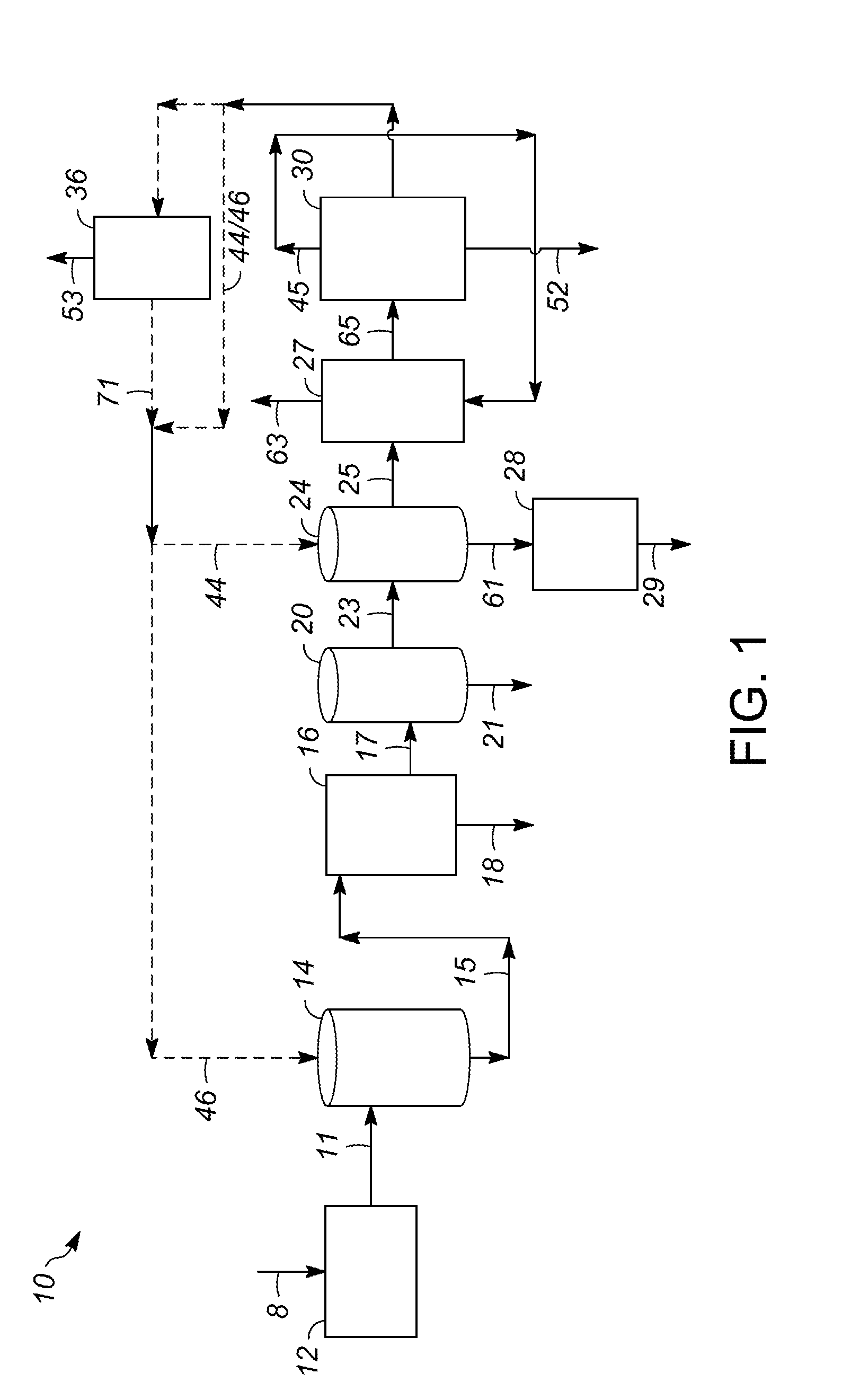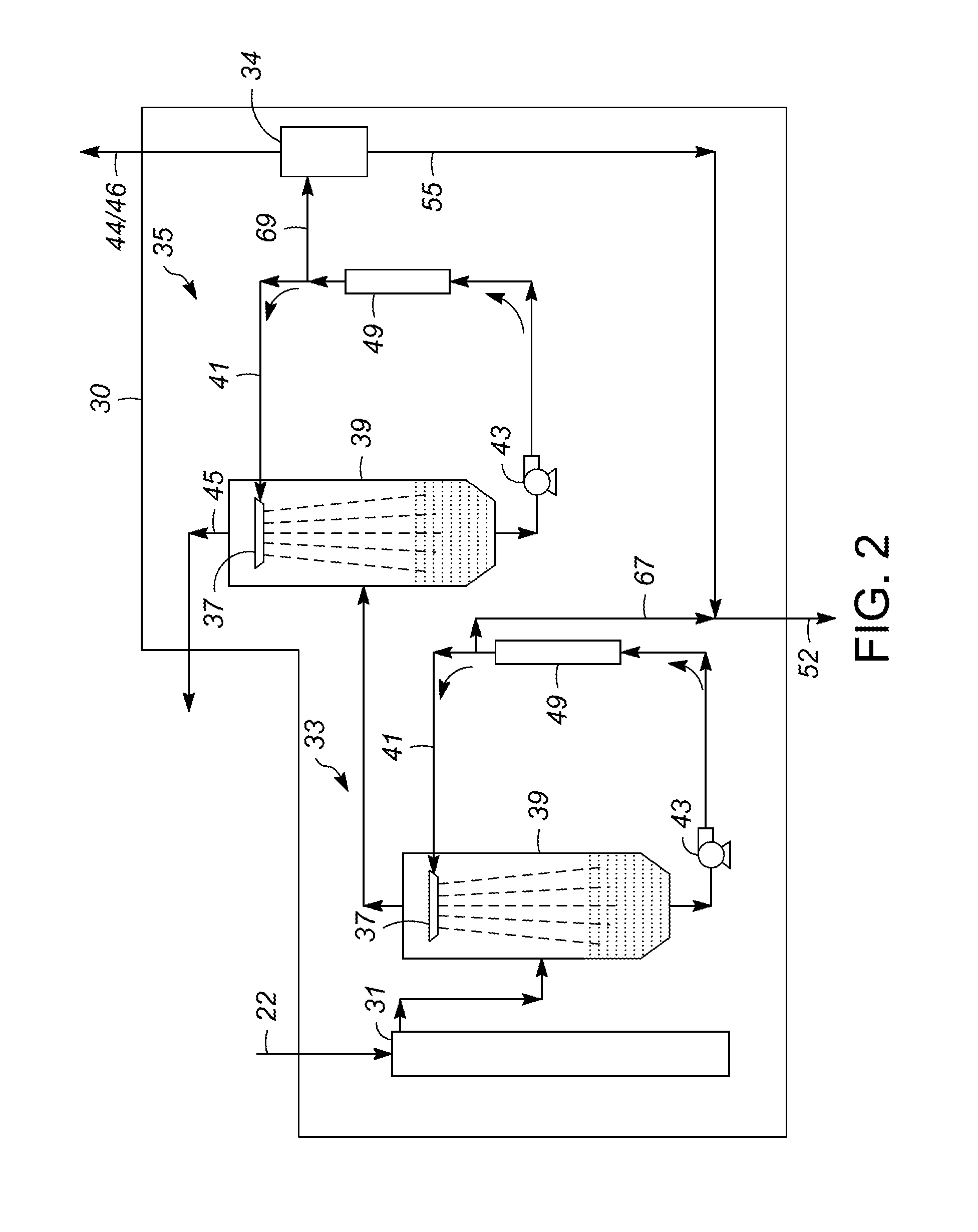Methods and apparatuses for forming low-metal biomass-derived pyrolysis oil
a biomass-derived pyrolysis oil and low-metal technology, applied in the direction of biofuels, fuels, combustion gas purification/modification, etc., can solve the problems of reduced yield, reduced biomass-derived pyrolysis oil yield, and water scarceness
- Summary
- Abstract
- Description
- Claims
- Application Information
AI Technical Summary
Benefits of technology
Problems solved by technology
Method used
Image
Examples
Embodiment Construction
[0013]The following detailed description is merely exemplary in nature and is not intended to limit the invention or the application and uses of the invention. Furthermore, there is no intention to be bound by any theory presented in the preceding background or the following detailed description.
[0014]Methods and apparatuses for forming low-metal biomass-derived pyrolysis oil are provided herein. The methods and apparatuses described herein may be particularly useful under circumstances in which sources of clean, fresh water may be scarce. In particular, the methods and apparatuses derive wash water from washed biomass, with the wash water used for washing the biomass that comprises a water-soluble metal component therein. In one embodiment, the wash water is derived from condensate of a portion of a pyrolysis vapor stream. In this regard, the wash water is still derived from the washed biomass, albeit after pyrolysis of the washed biomass. In another embodiment, the wash water is d...
PUM
| Property | Measurement | Unit |
|---|---|---|
| temperature | aaaaa | aaaaa |
| temperature | aaaaa | aaaaa |
| temperature | aaaaa | aaaaa |
Abstract
Description
Claims
Application Information
 Login to View More
Login to View More - R&D
- Intellectual Property
- Life Sciences
- Materials
- Tech Scout
- Unparalleled Data Quality
- Higher Quality Content
- 60% Fewer Hallucinations
Browse by: Latest US Patents, China's latest patents, Technical Efficacy Thesaurus, Application Domain, Technology Topic, Popular Technical Reports.
© 2025 PatSnap. All rights reserved.Legal|Privacy policy|Modern Slavery Act Transparency Statement|Sitemap|About US| Contact US: help@patsnap.com


